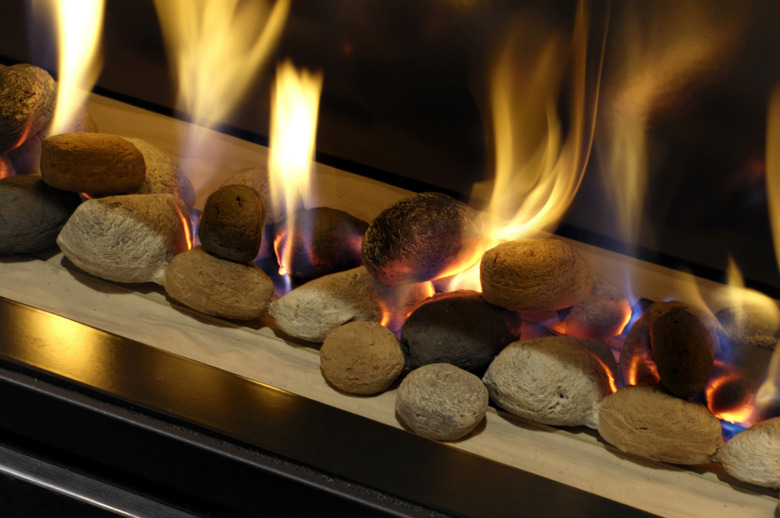What Causes Black Soot From A Propane Fireplace?
When gas molecules don't burn completely in a propane fireplace, those molecules are released into the air and collect on surfaces as black soot. You normally don't see the molecules escaping from the fireplace, but you'll see the gas molecules when they collect on a surface. Black soot stains any surface it lands on including walls, fabrics, flooring, and furniture. Doing some propane fireplace troubleshooting can help determine the cause of the soot.
Tip
Black soot can appear in a propane fireplace due to dirty components, improper components, or not enough air in the mix.
Dirty Fireplace Components
Dirty Fireplace Components
Burning propane gas produces water vapor and carbon dioxide molecules that are both colorless. If your fireplace's burners and pilots are dirty, the propane gas will not burn properly. Molecules will then escape into the air and form black soot on surfaces. You can clean up the components, including the pilot assembly, to see if it corrects the issue.
Over time, your propane fireplace's components also become worn. Unburned gas molecules escape from the components and travel through the air in your home. The molecules clump together as black soot and can cause respiratory problems if it's not removed.
Incorrect Propane Components
Incorrect Propane Components
Using incorrect propane gas components or orifices on your fireplace can cause propane gas to not burn properly resulting in black soot. This issue usually occurs on natural gas to propane gas conversions.
Black soot can also result from a malfunctioning propane gas regulator. The faulty regulator may be letting too little or too much gas into the fireplace causing a percentage of the fuel to not burn properly. Also, making incorrect pressure adjustments can result in the gas regulator malfunctioning and gas escaping from the component.
Improper Air and Propane Mix
Improper Air and Propane Mix
A propane fireplace needs the right amount of oxygen to burn cleanly. If there's not enough air in the mix, the propane can't fully combust, which can result in black soot. This is called a rich burn and typically produces yellow or orange flames that seem thicker or larger than normal.
This can happen if there's an issue with the regulator, but it can also happen in a properly working fireplace if the settings are incorrect. Increasing the amount of oxygen in the flames while still maintaining enough propane is key for a clean burn without soot and excessive carbon monoxide. A certified gas technician can adjust the regulator to get the appropriate air and propane mix.
Resolving Black Soot Issues
Resolving Black Soot Issues
Have your propane fireplace serviced by a qualified technician to resolve the black soot issue. Propane gas is dangerous and adjusting the fireplace's components yourself can damage the parts and put your home at risk for an explosion. Try not to use the fireplace until it is checked and serviced. Open a window or door in the room or area containing the propane fireplace so air can flow into the space if you have to use the fireplace before the technician can visit.
Warning About Black Smoke
Warning About Black Smoke
If you see visible black smoke escaping from the fireplace, turn the propane gas regulator to the "Off" position immediately and call a technician. Your propane fireplace is giving off a mixture of gases, including carbon monoxide, which is extremely dangerous. Always have a working carbon monoxide detector in your home to protect your family as the fireplace can produce the deadly gas even if black smoke isn't present.
